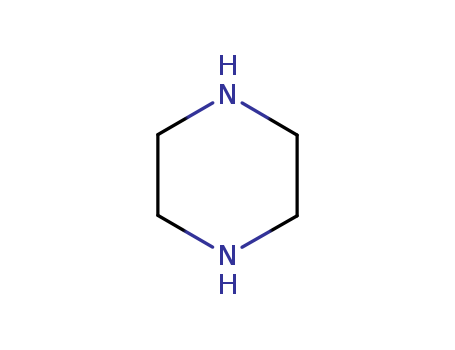10.1016/j.bmcl.2004.02.092
The study focuses on the design, synthesis, and evaluation of a novel class of pyrazolo[3,4-d]pyrimidines as potent inhibitors of enteroviruses, specifically coxsackieviruses. The researchers synthesized a series of these compounds and tested their antiviral activity using a plaque reduction assay. They discovered that these compounds showed remarkable specificity for human enteroviruses, with some derivatives highly effective at nanomolar concentrations. Structure-activity relationship (SAR) studies indicated that the phenyl group at the N-1 position and the hydrophobic diarylmethyl group at the piperazine significantly influenced the in vitro antienteroviral activity. Notably, compounds with a thiophene substituent, such as 20–24, exhibited high activity against coxsackievirus B3 and moderate activity against enterovirus 71, without apparent cytotoxic effects on RD cell lines. The findings highlight the potential of these compounds as new antiviral agents against enteroviral infections, for which effective treatments are currently lacking.
10.1248/cpb.51.1025
The study focuses on the design and synthesis of uracil-based heterocyclic compounds, which are significant in organic and medicinal chemistry due to their therapeutic potential and presence in natural products with strategic biological functions. The researchers synthesized various 6-methyluracil derivatives with different substituents at the 1-position, aiming to create new biologically active compounds. Key chemicals used include substituted ureas, diketene, and piperazine derivatives, which serve as starting materials and building blocks for the synthesis of the target uracil derivatives. The purpose of these chemicals is to create a range of compounds with potential pharmacological actions, such as antineoplastic, antihypertensive, anti-inflammatory, antiviral, and reverse transcriptase inhibitory effects. The study also details the synthetic strategies and confirms the structures of the synthesized compounds through analytical and spectroscopic data.
10.1016/j.farmac.2004.10.002
The study focuses on the synthesis and evaluation of a series of novel N-[2-(4-substitutedpiperazin-1-yl)ethyl]-1-(n-butyl or phenyl)-2,5-dimethyl-3,4-pyrroledicarboximides and related products. These compounds were designed to assess their potential as analgesic agents. The chemicals used in the study include various substituted piperazines, piperidines, and tetrahydro-b-carboline derivatives, which were incorporated into the structure of the pyrroledicarboximides to modify their pharmacological properties. The purpose of these chemicals was to increase analgesic properties and reduce toxicity in selected pharmacological models, with the aim of developing non-toxic analgesic agents with superior efficacy compared to acetylsalicylic acid (ASA). The synthesized compounds were tested for acute toxicity, analgesic activity in the writhing and hot plate tests, and their central nervous system (CNS)-depressive effects. The study found that most of the synthesized compounds displayed analgesic activity superior to ASA and exhibited CNS-depressive action, indicating their potential as analgesic agents. However, the compounds were found to be unstable in methanol solution and in dilute bases, which is a significant consideration for their pharmaceutical application.
10.1016/j.ejmech.2021.113591
The research aims to optimize the structure of JNJ4796, a small molecule fusion inhibitor targeting the conserved stem region of hemagglutinin (HA) in influenza A virus (IAV), to develop new broad-spectrum antiviral agents. The study focuses on modifying the piperazine ring (C ring) and phenyl ring (E ring) of JNJ4796 to enhance its antiviral activity, drug-like properties, and metabolic stability. The researchers synthesized and evaluated various analogues of JNJ4796, finding that replacement of the piperazine ring with other diazaheterocycles significantly reduced antiviral potency, confirming the essential role of the piperazine ring. For the phenyl ring, introduction of a fluorine atom at the para-position (compound 2c) resulted in increased potency compared to the original JNJ4796. Further optimization led to the discovery of (R)-2c, which exhibited excellent in vitro activity against IAV H1N1 and Oseltamivir-resistant strains (IC50: 0.03–0.06 μM), low cytotoxicity (CC50 > 200 μM), favorable oral pharmacokinetic profiles, and a significantly lower hERG inhibition rate (13.2% at 10 μM) than JNJ4796. The study concludes that (R)-2c is a promising candidate for further development as a new anti-IAV agent, with plans for in vivo efficacy evaluations.
10.1016/j.bmcl.2009.02.097
The research aimed to investigate the Gi protein-activating properties of a series of synthetic compounds by measuring their induced binding of [35S]GTPcS to different subtypes of Gi protein. The study encountered a significant issue due to the strong affinity between [35S]GTPcS and the tested compounds, which are characterized by multiple positive charges and high lipophilicity. The conclusion was that caution must be exercised when conducting binding studies with charged, highly lipophilic molecules. The chemicals used in the process included 4-aminopiperidines, 4,4’-bipiperidines, piperazines, and 4-methylalkylaminopiperidines, among others, which were synthesized using various reagents and conditions as detailed in the article's schemes and supplementary data.
10.1002/ejoc.200701164
The study describes the modular synthesis of nonpeptidic α-helix mimetics based on an oxazole–pyrrole–piperazine scaffold. This scaffold is designed to present a hydrophobic surface for recognition and a hydrophilic edge rich in hydrogen-bond donors and acceptors. The synthesis involves several key chemicals and steps: Tetrazine 5 is used in inverse-electron-demand Diels–Alder reactions with various dienophiles (such as alkynes 6a, 6b, and enol ether 7) to form pyridazine diesters 3a–3d. These pyridazines are then reduced to pyrroles, and the piperazine moiety is introduced through peptide coupling with piperazines 4a and 4b. The oxazole moiety is introduced by coupling amino alcohols (2a–c) onto the remaining ester, followed by oxidation and oxazole formation. The final reduction of the pyridazine ring to pyrrole and removal of the Boc protecting group yield the desired α-helix mimetics. The study demonstrates the synthesis of a small library of compounds bearing common hydrophobic amino acid side chains, which are being evaluated for their effects on protein–protein interactions.



 C
C
 C:Corrosive;
C:Corrosive;

